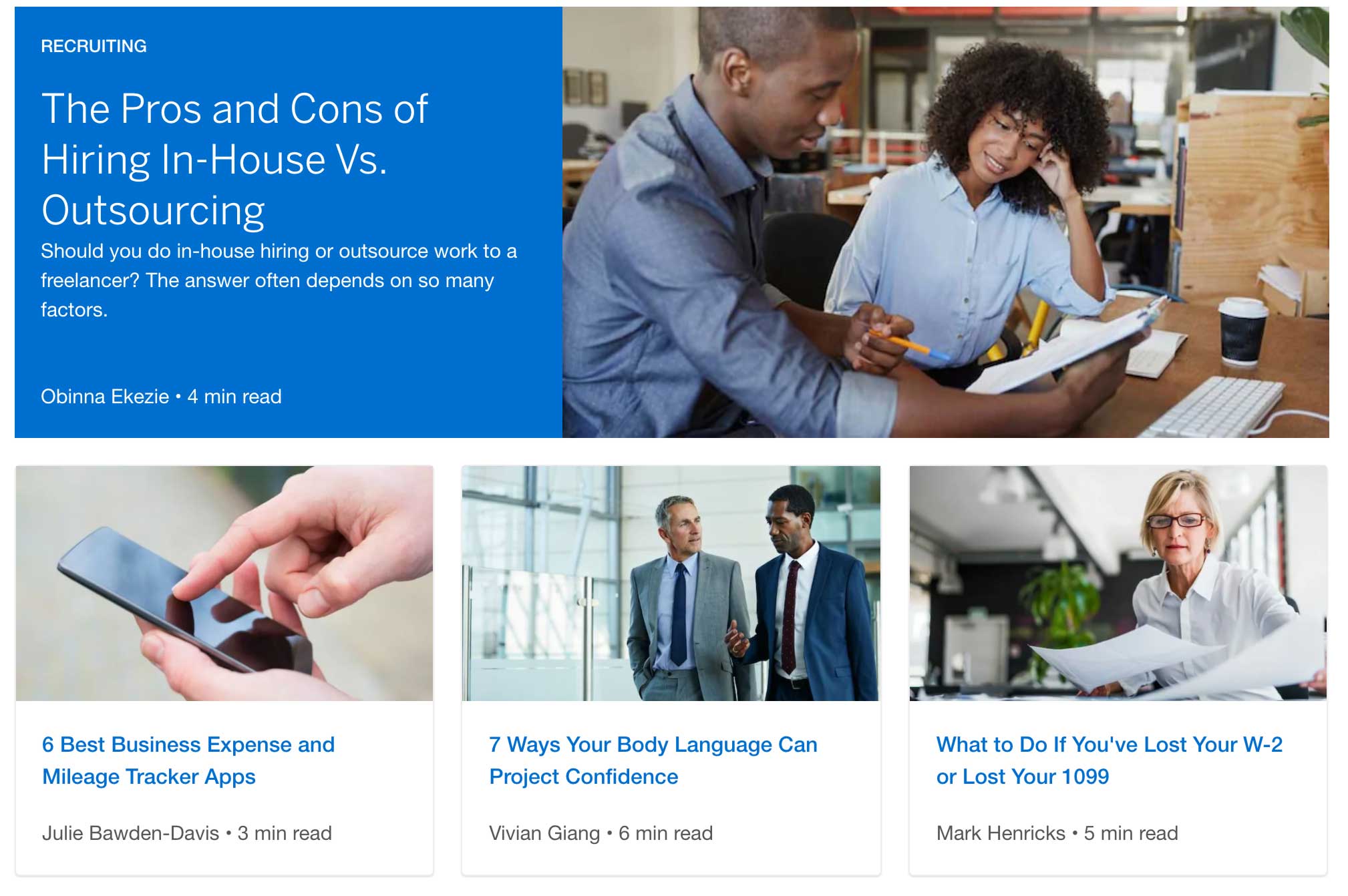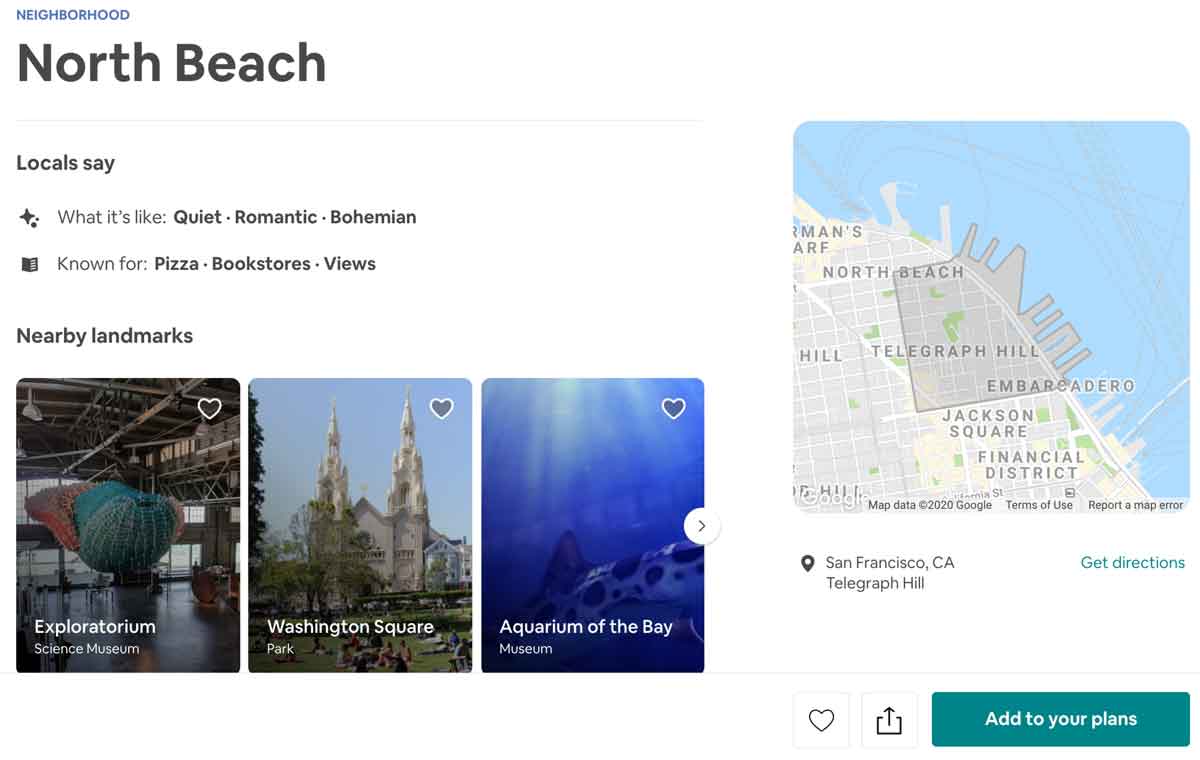Eight Great Examples of Truly Excellent Content Marketing
Content marketing is a marketing strategy focused on creating and distributing valuable, relevant, and consistent content to attract and retain a target audience. The keywords here are ‘valuable’ and ‘relevant’. Each content piece should communicate your message in a way that adds value to your readers, answers their real questions, piques and expands their interests, and makes them trust you and your brand.
As with any other marketing technique, the final goal of content marketing is to, also, convince readers and eventually turn them into buyers, but this is not the initial intention, but rather the desired outcome. Still, content marketing turns out to be pretty profitable for all sorts of businesses promoting themselves online. 61% of U.S. online consumers make a purchase based on recommendations they’ve read on a blog, and 79% of them spend half their time researching their products.
61% of U.S. online consumers make a purchase based on recommendations they’ve read on a blog
This is just part of the reason why 53% of businesses are investing in content marketing, and 55% of marketers say blog content creation is their top inbound marketing priority in 2018 as well. Compared to outbound marketing, well-planned, quality, and helpful content can generate three times as many leads and costs 62% less.
If you’re still on the fence about the benefits of content marketing, even after these statistics, the following are eight great examples of effective use of content to reach out and expand an audience, and how and why these companies’ strategies worked.
American Express
OPEN Forum, American Express’ website dedicated to the U.S. small business community, is one of the greatest success stories in content marketing.
It all started in 2007. Recognizing its position as one of the leading payment card providers for U.S. small businesses and its inextricable connection with their success, Amex decided to take a turn in a different direction. Their marketers started focusing more on what’s truly helpful for their large customer base, creating quality content on topics their readers are interested in. They were talking less about their cards and other products, and more about what actually helps the community thrive.
The efforts were recognized by businesses, and by 2010 OPEN Forum reached a million monthly visitors, and had over 11,000 new small business subscribers. The community continually grew through the years and is still a great place for small businesses to look for help and advice, as well as to speak their mind.
Airbnb
It’s been pounded hard by the pandemic, but another mind-blowing example of top-notch content marketing is that of Airbnb. Their travel guidebooks and user-generated neighborhood guides are full of high-quality content, paired with locals’ advice and suggestions to make the most of your time in their city.
Storytelling is probably the greatest strength of Airbnb’s content marketing strategy and fuel to its success. The website and app give travelers a chance to feel the local experience of the place they’re visiting, as well as share more in-depth information for those who want to know more. It’s a unique approach that triggers people’s excitement by seeing the places that make Airbnb what it is, in their true, authentic beauty.
In 10 years, the company has grown into a multibillion-dollar business, with more than 4 million listings, and is now active in 190 countries worldwide. However, maintaining their brand community is still their highest priority.
Whole Foods
What makes Whole Foods different from any other supermarket chain is the way they’ve positioned themselves as a healthy lifestyle choice, embracing healthy and earth-conscious living every step of the way. And their content marketing strategy is geared in the same direction. Their efforts to bring this kind of lifestyle closer to their buyers, present it as a choice that everyone can make, and their honest desire to truly help their audience, can all be felt in their content.
Whole Foods’ Whole Story blog is full of healthy living tips and ideas on how to make this lifestyle more inclusive, quality pictures and videos of delicious recipes being prepared in front of your eyes, and pretty much everything else you can think of that can make healthy choices easier, faster and less complicated for their audience. Their Healthy Eating menu features practical content on healthy cooking and useful products that both new and regular readers can appreciate, either as a resource or as a fact-checker.
In addition to this, they also host all sorts of contests and giveaways which have proven to drive even greater engagement for the brand. It’s not just the food they promote that is real, but so are the people behind the social networks who help humanize the business with their friendly and thoughtful comments and helpful ideas.
Direct advice for dads
The popular parenting portal dedicated to “the other parent” is a perfect example of how extensive research at early stages can drive the success of your content marketing. Direct Advice for Dads is a blog created by content marketing agency Mahlab Media for the Australian private health insurer HBF. They wanted to reach out and expand their audience of young families, not necessarily through health-related content like most of the other insurers, but to fill in an underserved segment among their key demographic – soon-to-be dads and men who are already fathers.
Before it ran, the project spent a year in planning and research to understand the content, format, and style that appealed the most to their readers and made sure that moms were involved, too, knowing that they’ll happily share the content with their friends and partners. In just four years, they gained over 75,000 Facebook followers, and their efforts were rewarded with international recognition and awards.
The website features personal, first-person stories from real men facing the issues and finding solutions in a healthy way, and unlike most others, it does it with brutal honesty, confronting all the emotions, concerns, and fears that come with fatherhood. While moms are over-flooded with information on parenting, men are often ignored, and their needs to learn and do better are left unrecognized. That is until DAD entered the scene.
Denny’s restaurant
Denny’s Tumblr blog is another great example of content marketing based on solid audience research and knowledge. For years they’ve faced bad press and law suits, until in 2011, Denny’s Restaurant decided to rethink their marketing strategy and get the familiar, warm “diner feeling” they’re known for, back in the brand. It resulted in an entire content marketing campaign that, surprisingly, breaks all the rules, – there’s no valuable content that serves customers’ needs and wants, there are no beautiful images that provoke their senses, there’s nothing to make them think or get serious, just pure fun and laughter. The blog is full of silly memes and cartoons, ranging from smart to totally weird, some of which many would consider even childish, and yet they’ve helped ignite the site’s biggest traffic growth in a decade.
The campaign was running mostly on Tumblr and Instagram, as these social sites best fit its purpose and audience. Still, the content was shared on Twitter and other social media as well, with fans and customers adding to the fun with their hilarious images and comments.
This kind of approach to marketing is a bit risky, as not every audience enjoys such humor. It turned out successful because Denny’s understood their customers so well and knew why they were coming to their restaurants. As their chief brand officer, Frances Allen says “It all starts with understanding your brand DNA at its core and the role you play in your customers’ lives. You have to know why you matter to them”.
Cisco
Cisco is a top brand in the networking hardware industry and has always used content marketing and social media to great success. They successfully ran a series of videos called My Networked Life, with young professionals from around the globe sharing their personal use of technology to achieve their goals and dreams. Cisco also has a series of blogs on topics that its readers find relevant and valuable. The Network is their main hub for original content, driving most of the audience growth.
The marketing team at Cisco was already aware of the benefits social media brings to their brand when they launched their new Aggregated Services Router, and decided to use the product as a case study to more precisely quantify the ROI of their content marketing efforts and social media strategies. The result surprised the executives, saving them more than $100,000 just because they’ve used social media to market their new product. After that, social networking became part of every launch of the company, resulting in a 281% ROI over a 5-month period, and amounting to an annual cost-benefit of over $1.5 billion, according to Cisco’s Social Media Listening Center.
It’s always important to measure the effectiveness of the campaigns you run, as well as every other metric that your data can give you. As the saying goes, you can’t improve what you don’t measure, and Cisco’s example shows how one single tested campaign can change the course of all that follows, when measured and understood well.
New York Times
The 167 years old newspaper giant and one of the leaders in print media, confronted with the reality of today’s digitally-obsessed world, but still trying to preserve the unique touch and feel of the written word, ran the NYTVR campaign in 2015 in collaboration with Google, combining the “old” print medium with new and progressive technologies in virtual reality.
Together with the latest New York Times newspaper, over a million of their subscribers also received in the mail their very own Google Cardboard. This original product lets users experience the newly created VR app and dive into their favorite story, from walking on a planet three billion miles from the sun to standing alongside award-winning journalists at the center of the action or talking about next projects with the famous street artist JR in his actual studio. It was a cool and new way of experiencing the news for readers, especially for those of younger generations. If you don’t enjoy virtual reality or don’t have cardboard, you can simply download the free app and watch the 360-degree immersive videos on the screen, except not in 3D.
Nike
Nike is one of the most active brands online, with literally hundreds of social media accounts for many of their different products and geolocations. Their content marketing and social media presence are impeccable, and they have so many interesting and engaging campaigns, it would take a whole other article to cover. Here, we’ll only talk about the way Nike runs their customer support.
Nike has a separate handle on Twitter – @NikeSupport – just for company-customer interaction regarding help and support when needed. And they’re super-fast to respond, always with thoughtful and genuinely helpful answers, often in a fun and playful way. They proactively interact with the following, asking for a shout if someone needs help. This kind of communication helps the brand feel a lot more friendly and approachable to its audience. And that’s one of the reasons Nike is almost synonymous with the sport today, worldwide.
Some of the companies mentioned here are well-known, established brands, and others are newcomers. However, both of them know the true value of great unique content to engage an audience and generate new leads. They do their best to get to know their audience, and then create content that people want to share and interact with, whether because it is useful, interesting, funny, or newsworthy, or just because it tells a personal story that readers connect with.
Get inspired by these examples and learn from their success stories to skyrocket your own content marketing efforts and set yourself ahead of your competition.
Content marketing FAQs
What is content marketing?
Content marketing is a marketing strategy focused on creating and distributing valuable, relevant, and consistent content to attract and retain a target audience.
What is the goal of content marketing?
The goal of content marketing is to convince readers and eventually turn them into buyers.
Why should my business invest in content marketing?
61% of U.S. online consumers make a purchase based on recommendations they’ve read on a blog, and 79% of them spend half their time researching their products.


